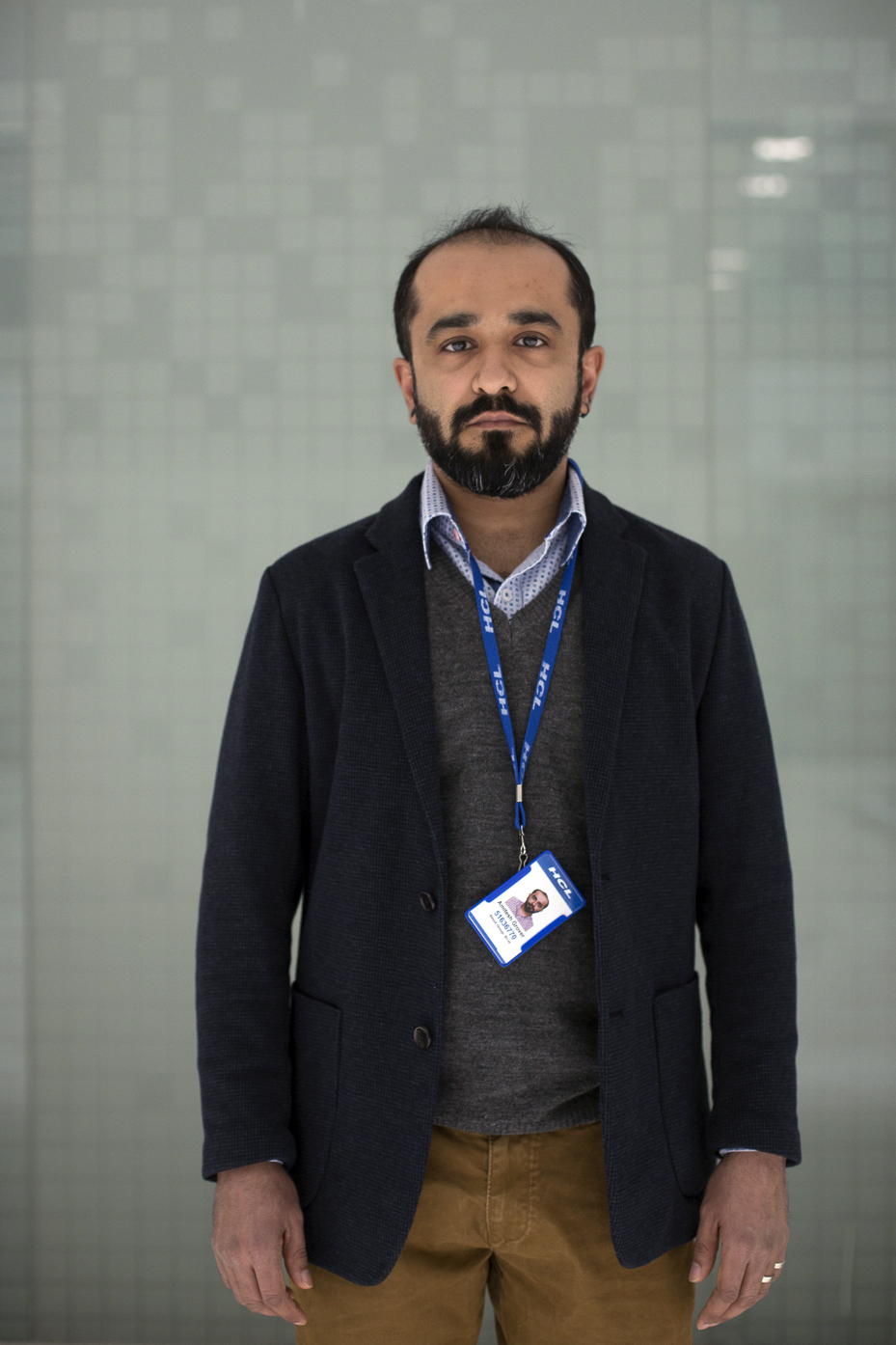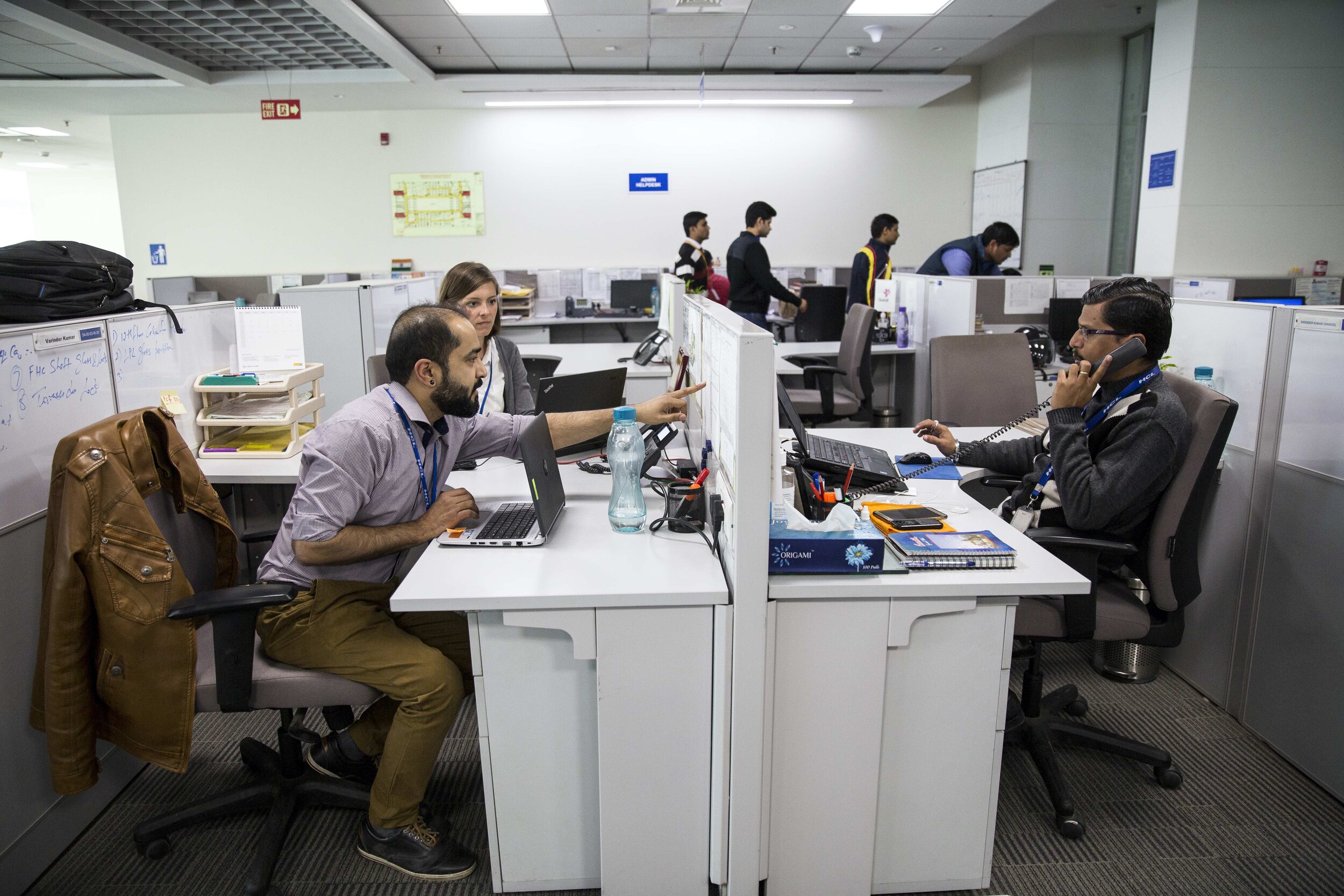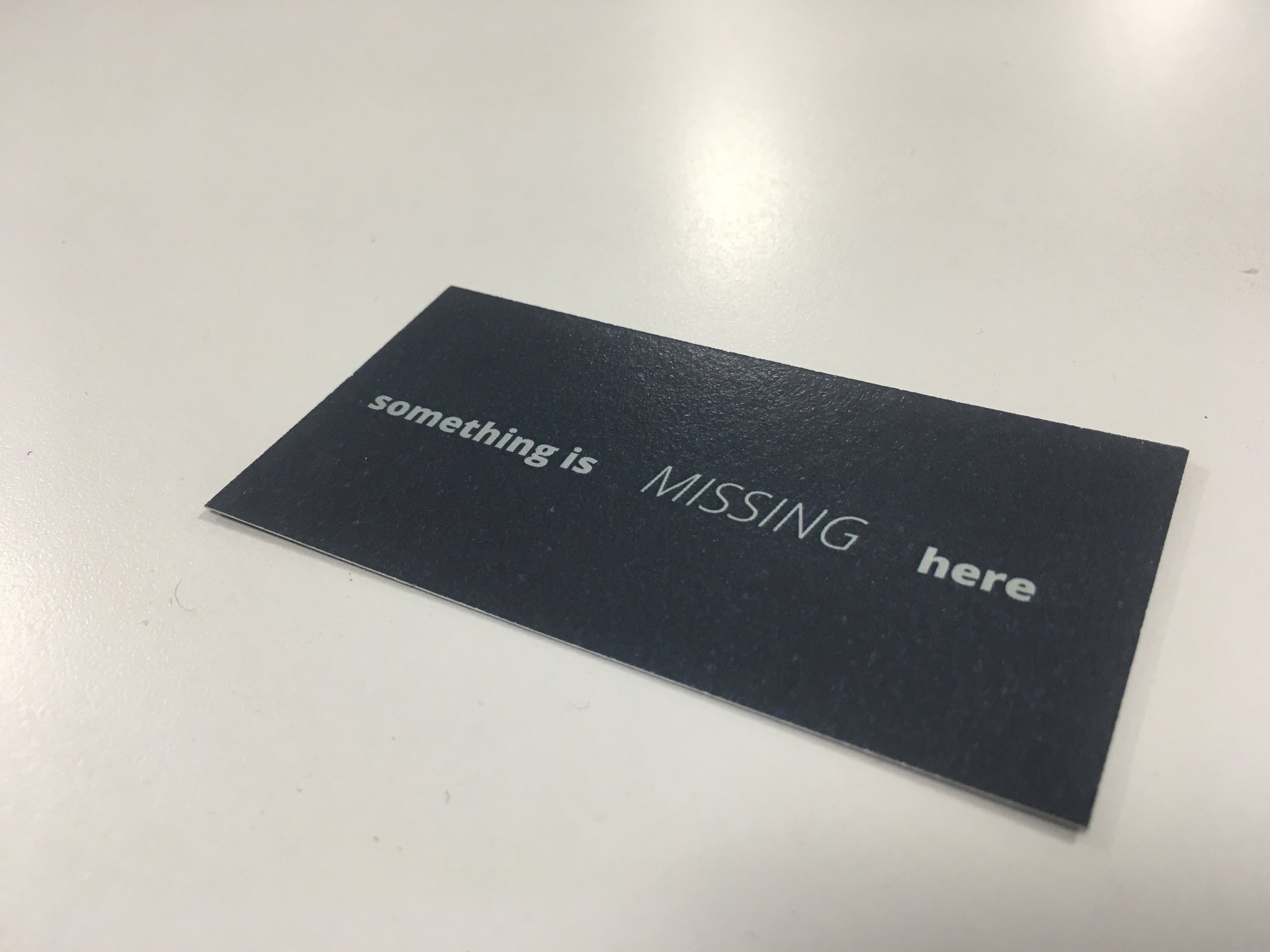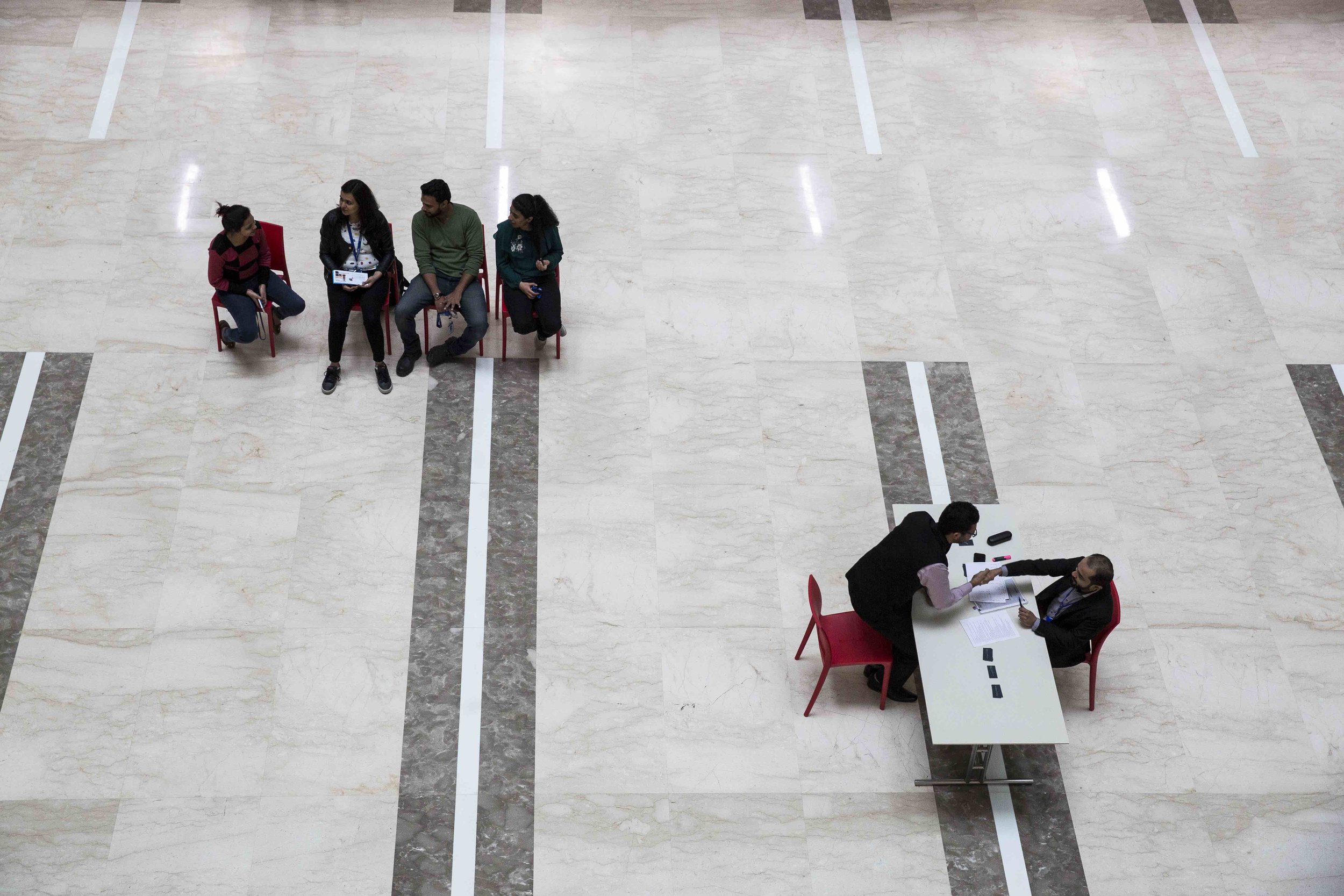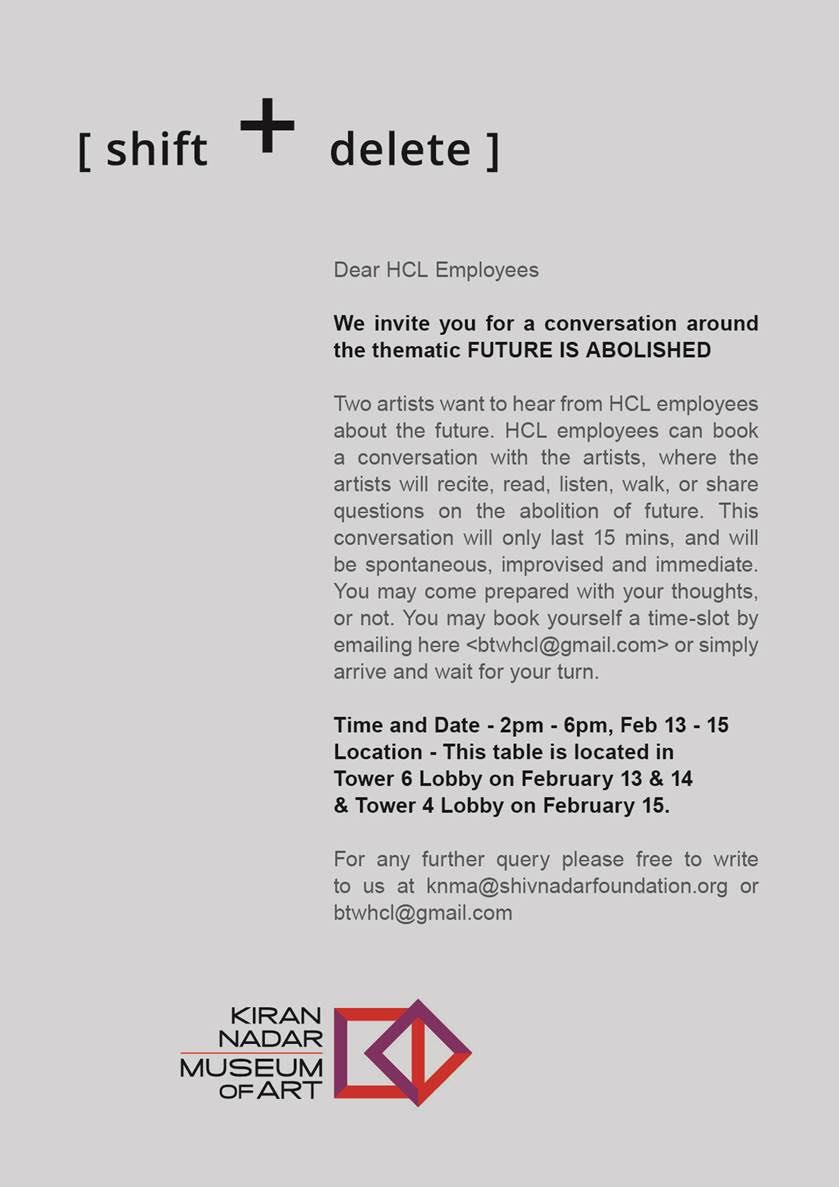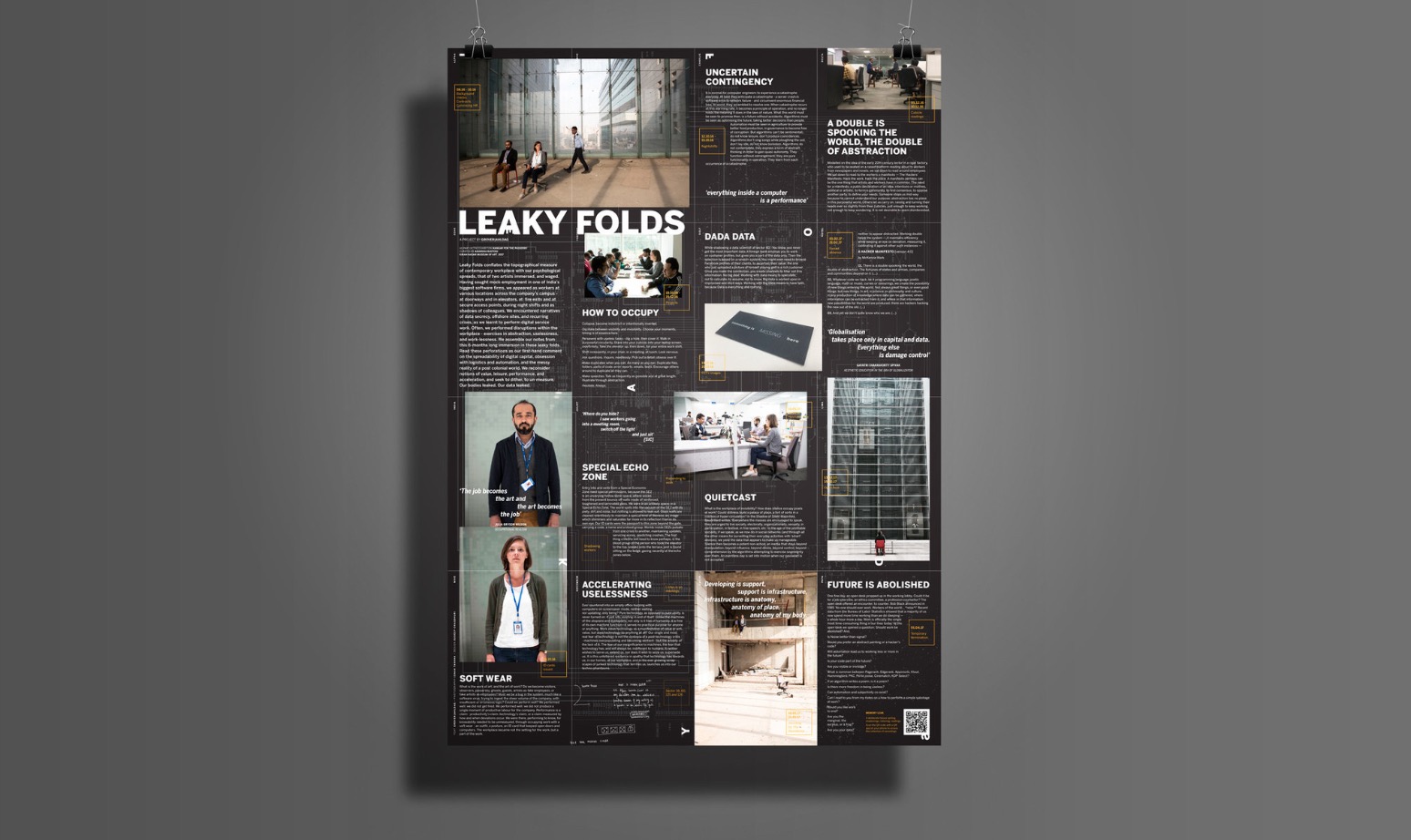BACK TO WORK
Occupational Performance over 6 months (2016-17)“Amitesh explores aspiration, exploitation, and precarity in this bold new performance work” - The Telegraph
“Art project that strikes a chord - Back To Work series by Amitesh Grover” - Art India
What is the work of art in the art of work? How can I perform well while being utterly useless? As contemporary work conditions move foreword to measure the worker in every intimate way - his/her satisfaction, happiness, and growth - what is affective residue of the work of an artist? Can the workplace become not the setting for the work, but of art itself?
Manifesto For How To Occupy -
Collapse, become indistinct or intentionally inverted.
Oscillate between visibility and invisibility. Choose your moments, timing is of essence here.
Persevere with useless tasks - dig a hole, then cover it. Walk in purposeful circularity. Stare into your cubicle, into your laptop screen, indefinitely. Take the elevator up, then down, for your entire work-shift.
Shift incessantly, in your chair, in a meeting, at lunch. Look nervous.
Ask questions. Inquire, needlessly. Pick out a detail, obsess over it.
Make duplicates when you can. As many as you can. Duplicate files, folders, parts of code, error reports, emails, texts. Encourage others around to duplicate all they can.
Make speeches. Talk as frequently as possible and at great length. Illustrate through abstraction.
Hesitate. Always.
Under the auspices of an art commission, I approached HCL Tech Pvt Ltd. for a placement in their company. HCL Tech Pvt Ltd is the biggest IT company in India. I proposed an employment contract in which I declared the request for a job as an art project. Millions of young Indians graduate in computer sciences every year in the hope that they are able to land a job in the booming tech economy of India. As someone who belongs to that demographic - male, in my thirties, having completed certificate courses in computers at college - I conceived of this art project as an exercise in occupational realism. By going to ‘work’ everyday, I embedded a series of performance acts that somehow allowed me to highlight the structure of social and political relations with all its ambiguities. I wanted to depict labour or labouring bodies, placed right next to the artist’s body.
I decided to adorn the artifice of the worker, dress as a subject of the company, working for the company, and yet somehow continue to pursue it as an artist. My intent was to appear as a worker, to learn the work of computer engineers, to go to office everyday, to get wages, to perform. Inhabiting this dual role of the artist and the worker needed rehearsal, but there wasn’t any opportunity; to occupy the position of an employee, but self-identifying as outsider; imbuing actions with a ‘hidden’ value, executing the job in the name of the company, and in the name of art, had to be learnt on the job. What is performing at work, and what is the work of performance? How is productivity, idleness, and attention measured and quantified across the dispensable resource of contemporary digital capital?
BACK TO WORK conflates the topographical measure of contemporary workplace with my psychological spread, that of an artist immersed, and waged. Having sought mock-employment in one of India's biggest software firms, I appeared as workers at various locations across the company's campus - at doorways and in elevators, in fire exits and at secure access points, during night shifts and as shadows of colleagues. I encountered narratives of data secrecy, offshore sites, and recurring crises, as we learnt to perform digital service work. Often, I performed disruptions within the workplace - exercises in abstraction, uselessness, and work-lessness. I assembled notes from this 6-months long immersion in these leaky folds. Read these perforations as my first-hand comment on the spreadability of digital capital, obsession with logistics and automation, and the messy reality of a post colonial world. Can we reconsider notions of value, leisure, performance, and acceleration, and seek to dither, to un-measure? When the body leaks, data leaks too.
Performed by Amitesh Grover (in collaboration with Arnika Ahldag) | Photography by Ishan Tankha | Material Folded & Perforated Booklet | Photography by Ishan Tankha | Designed by Oh!Design (Sudeep) | Originally commissioned for the exhibition Hangar For The Passerby, Kiran Nadar Museum of Art.
Related iteration - https://amiteshgrover.com/kafkas-castle
